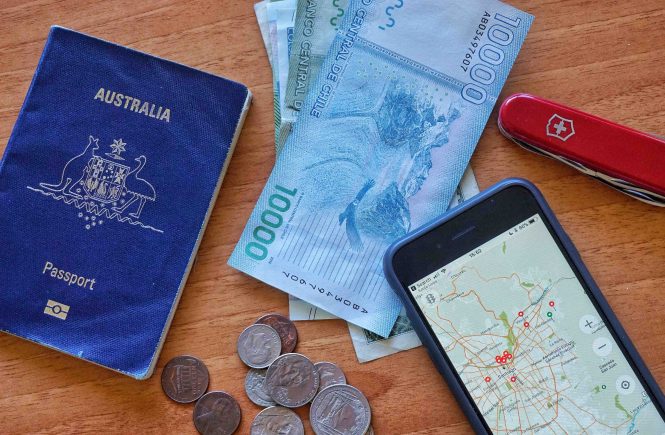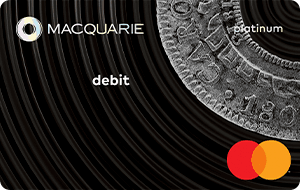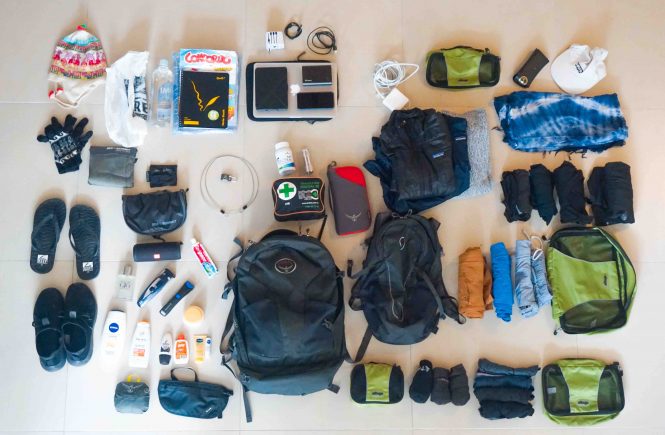Straight to the point..
Because I travel a lot, and tend to geek out on this sort of stuff, my friends often ask me the above question.
The Answer: The best travel card for Australians overseas is the Macquarie Transaction Account (Platinum Debit Card).
(Note: if you want the best credit card option I also mention that at the bottom of this post).
Why is this the best travel card for Australians overseas?
First, I think it’s important to understand why most ‘Travel Money Cards’ suck!
Before I begin, let me point out that the Macquarie Platinum debit card is not a Travel Money Card. Contrary to common perception, ‘Travel Money Cards’ (the ones where you load balances in different currencies before your trip) are not the best cards to take with you overseas. In fact, they are often the worst and, to put it bluntly, aimed at ripping off unsavvy travellers. You might have seen Travel Money Cards at the post office, or advertised to you while you were using your bank’s website.
While I am generalising (some Travel Money Cards will have fewer of these negative qualities than others), here are some common reasons why they suck:
- You must pay to obtain the card and will be charged a replacement fee if you lose it.
- You have to go through the trouble of loading up balances in different currencies (why bother?).
- Not all currencies are available. This means that for each currency that you are unable to preload, you will be charged a foreign transaction fee anyway (often at a higher rate than your normal bank card).
- There is a limit to how many currencies you can hold at a time. This isn’t a big deal, but if you are planning a round the world trip it could be an issue.
- They have bad exchange rates. This is probably one of the most important reasons. Yes, you can lock in an exchange rate before you go, but if it’s poor, what’s the point?
- You are charged a fee when you load money onto the card and when you transfer money off of it.
- You are charged a fee when you withdraw money from an ATM.
That all sounds pretty sucky right?
So why not just use your normal bank card then?
This will obviously depend on which bank you are with, but the two most common reasons why you shouldn’t use your normal bank card when you travel overseas are:
- You will be charged a foreign transaction fee whenever you use the card (around 3% of the transaction).
- You will be charged both a foreign transaction fee and a withdrawal fee whenever you use an ATM.
Now, let’s look at why the Macquarie Platinum Debit Card is awesome!
- It’s completely free to apply for and has no ongoing fees. If you lose your card, a replacement will be sent out to you at no extra charge.
- You can keep all your money in Australian Dollars. Because it is just a debit card for an Australian bank account, there is no need to preload different currencies onto the card before you leave.
- When using the card for purchases overseas, there are no foreign transaction fees. Your Australian Dollars are automatically converted into the local currency on the fly, at no additional cost.
- Conversions are done using the official Mastercard exchange rate. This rate is very competitive and is usually almost the same as the rate that you will find on xe.com. In other words, you are getting the best rate possible.
- There are no withdrawal or foreign transaction fees when you use your card at an ATM.
- You earn interest on the money you have in the account (even more if you link it to a savings account).
Wait, so what you’re telling me is..
I can simply apply for a normal debit card that has zero monthly fees and it outperforms Travel Money Cards, and my normal bank card in every single aspect? Yes! That is exactly what I am telling you.
Something to be aware of – understanding ATMs
How ATM fees work overseas
If you have read up until this point, you may now be under the impression that you can simply waltz over to any ATM you see on the street, and that you’ll never be charged a fee. This, however, isn’t entirely true.
While it is true that Macquarie themselves will never charge you an ATM or foreign transaction fee, it is still possible that the ATM itself will charge a fee.
This is an important point and, to clarify it, let me give you an example.
Let’s say that I take my normal everyday Commonwealth Bank card with me overseas and go to withdraw money from an ATM. Just for this one transaction, I am potentially going to be hit with up to three different fees!
The first two fees can’t be avoided. They are charged by my bank no matter what (in this example, Commonwealth Bank).
Whether I get charged the third fee, however, will be completely dependent on the policy of the overseas ATM I am using.
The three fees are as follows:
- The fee Commonwealth Bank charges me to use my card at an overseas ATM ($5).
- The foreign transaction fee Commonwealth Bank charges me to convert my money into the local currency when I withdraw it from an ATM (3% of withdrawal amount).
- The fee that the overseas bank charges me for using their ATM (if they charge a fee). This is commonly somewhere between $4 and $12, but again, only applies if the ATM charges a fee.
In the above scenario, if I was instead to use my Macquarie Platinum debit card, I would not be charged the first two fees, but I may still be charged the third (depending on the policy of the ATM). In other words, the only fee you MAY get charged when using your Macquarie Platinum debit card is the fee charged by the ATM itself (which is outside of Macquarie’s control).
So can this fee be avoided?
Yes. You can often find overseas ATMs that don’t charge a fee, and once you do, you will be withdrawing money at no additional cost whatsoever. The first time you do this, you should buy yourself a beer with the money you save 🙂 .
Almost all ATMs will warn you before charging a fee, so you will have the option of cancelling or continuing with the transaction.
In the worst case scenario, even if you use your Macquarie Platinum debit card at an ATM that does charge a fee, at least you are only getting charged one fee, not three!
By the way, some ATM’s try to trick you into using their conversion rate. Always say no to this option if asked. And always choose to withdraw the money in the local currency, not the AUD or any other currency it might offer. This will ensure you are letting Mastercard do the exchange, not the ATM which often tries to give you a bad rate when it so nicely asks you this question.
Some additional tips
Once you have the card, leave some money in your account
If you haven’t used your card in a while, and you also don’t have any money in your account, Macquarie may terminate your account. This can sometimes happen in those periods between trips, when your card is just sitting there. To prevent this from happening, it’s a good idea to leave some funds in your account, even when you’re not travelling. This way, it will remain active and be ready to use again when you next hit the road (I usually leave at least $100 in mine).
Is it still worth having a backup card?
Although this is a fantastic card, it is definitely still worth taking a backup card with you. Even if the backup card’s features aren’t as great, at least you’ll still have another way to access cash overseas in the event that you lose this one. If you want to go a step further, have the backup card on the Visa network. This way, you’ll also be covered if you encounter a place that doesn’t accept Mastercard (it happens).
Final note – what about a credit card option?
For anyone looking for a credit card option, my first recommendation would be the Bankwest Zero Platinum Mastercard (please note that it must be the Platinum version of the card and not another card in the ‘Zero’ range).
This card has all the same benefits that I mentioned make the Macquarie card so great, except fee free ATM withdrawals. So even if you did get this card, I would still use it in combination with the Macquarie Platinum debit card as the Macquarie card is still the best way to access cash overseas.
Personally, I usually use the BankWest Credit Card if I need to make any in-store transactions and use the Macquarie Platinum Debit Card mostly ATM withdrawals. But this just comes down to personal preference.
It’s worth mentioning that some people also like the “28 Degrees Platinum MasterCard”. While I do think it’s a great card, I personally chose not to get this card simply due to the fact that you are charged a fee if you pay off the card via BPAY which I don’t like.
Please also be aware that applying for a credit card is a much more serious commitment than applying for a debit card. Applying for a credit card may affect your credit score and the application process will be stricter, involving things such as proving your income, etc. You should seek professional financial advice before applying for a credit card.
That’s it!
It is my hope that this information will save you some time, money and hassle on your next overseas adventure. Thanks for taking the time to read this article. Have an amazing trip! 🙂
Cheers
Shanon
Disclaimer: This is not financial or investment advice, and I am not a registered financial or investment advisor. I am merely sharing my personal opinion and experience. Please consult a financial advisor before making any financial decisions. Additionally, while the information in this article was accurate at the time of writing, it is possible that the products and features discussed will change, causing something that I have said to no longer be valid or true. It is your responsibility to make sure that any product mentioned still meets or does not meet your requirements before making your own decision to apply or not apply for that product. I am not paid any commission on any of the products mentioned in this article.




2 Comments
Love this article, we’ve been using this combination for years! We had the 28 Degrees card before the whole fee for BPay payments came into effect, we still have the card as a back up but BankWest Zero Platinum is our go to card now. It’s just a shame that Citibank changed from Visa to MasterCard as we are now completely MC which is a challenge in some countries.
Even living in Canada now we haven’t been able to find Canadian equivalents, so we keep these accounts active for when we travel outside of Canada.
I’m blown away by the amount of Aussies we meet on the road using their regular cards or a travel card, hopefully we can continue to spread the word about these great products available and help a few more people save on all those crazy fees!
Thanks Jade! Glad to see someone else rocking this combo 🙂 The fees definitely add up, especially on longer trips. If you’re looking for a decent Visa card, the ING Orange Everyday is a good card too, however at the time of writing this you need deposit 1k per month and make a minimum of 5 transactions per month to reap the benefits. For this reason I only use it as a backup. Cheers